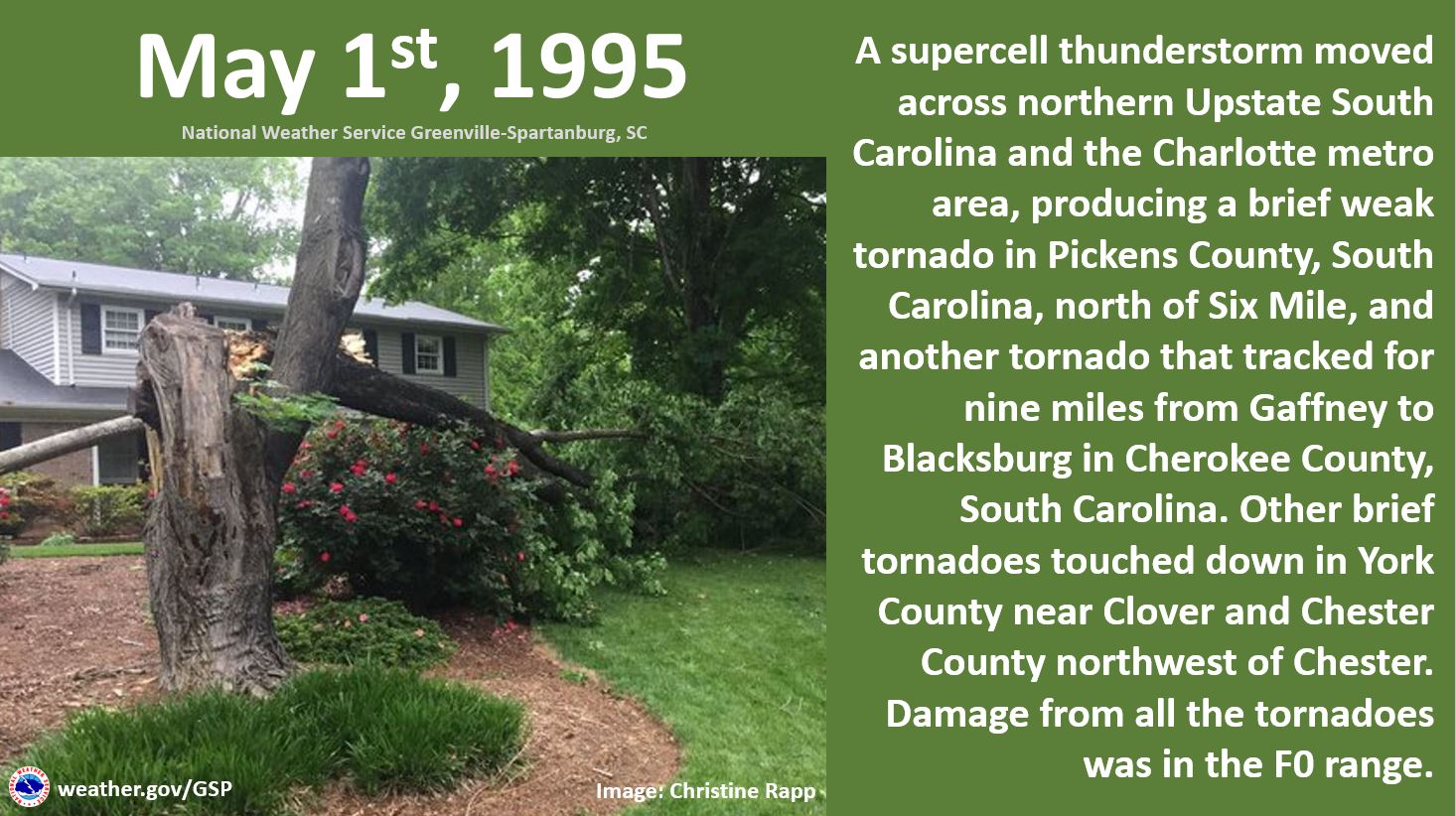April 27th, 2011:
"The lord gives. The lord takes away. Blessed be the name of the lord." Everything led up to this day being the worse. As much as I love weather and studied it since I was 4 years old, nothing could have prepared me for what lied ahead on this day 12 years ago. Leading up to this, I knew that this was to be a major tornado outbreak plus I had a thought prior to this day of what if all these outbreaks we've seen in April 2011 were leading up to one BIG outbreak. Well, this was it. The one thing that could have kept this from being as big as it was didn't and it actually ended up helping the afternoon/evening round. I was 16 years old at the time (would turn 17 the next day). My birthday is April 28th. If you ask me to this day what I remember from April 27th, 2011, I will tell you I remember everything. This post will have a lot of pictures and will be long.
A big squall line of storms moved through the early morning hours on the 27th prompting a tornado warning for Monroe County at around roughly 1:30am. This line of storms was unexpected, but one thing I remembered is that early morning storms could limit the instability causing additional storms not to form or be as intense. So I thought this might be the case. I was sadly mistaken. Our forecasted high that day was near 90 degrees with a 90% chance of strong storms along with a 90% humidity value. We also had a 9 out of 10 on the TOR:CON meaning a 90% chance of seeing a tornado within 50 miles of a location. All this was signaling the expectation for a major tornado outbreak. The outbreak of April 27th led to 219 tornadoes within a 24-hour period. Breaking the old record of 148 set back during the 1974 Super Outbreak. Of the 348 fatalities that occurred in total during this outbreak, a total of 316 occurred on April 27th alone. It led to $10.2 billion in damages. A total of 360 tornadoes occurred during the entirety of this multi-day outbreak of which 22 were EF3's, 11 EF4's, and 4 EF5's. I don't have time to do a summary of each tornado that occurred, but I will go through the bigger ones.
Philadelphia, MS (EF5): This tornado had estimated winds of 205mph and lasted 30 minutes. It led to 3 fatalities and up to $1.1 million in damages. The tornado caused extreme ground scouring up to 2 feet deep in places. This was the first EF5 tornado in the state of MS since 1966.
Cullman/Arab, AL (EF4): This tornado had estimated winds of 175mph. It led to 6 fatalities and caused substantial damage.
Hackleburg/Phil Campbell, AL (EF5): This tornado had estimated winds of 210mph and lasted 2hrs, 35 minutes. It led to 72 fatalities making it the deadliest tornado in the history of Alabama and caused $1.29 billion in damages. Ranking 7th costliest tornado in U.S. history. It was the first EF5 in Alabama since 1998.
Reform/Oakman/Cordova/Blountsville, AL (EF4): This tornado had estimated winds of 170mph. It led to 13 fatalities and greater than $170.3 million in damages. It lasted for 2 hrs and 16 minutes.
Smithville, MS/Scottsville, AL (EF5): This tornado had estimated winds of 205mph and lasted for 43 minutes. It led to 23 fatalities including 16 in Smithville and led to $14.4 million in damages. Me, my dad, and sister were inside our bathroom when it hit. 10 seconds or less is all it took to decimate Smithville. The tornado was moving at 70mph. We survived by the grace of God without a single scratch. I heard a low rumble off in the distance when we were all outside on our backporch. My dad had called me outside because he thought he saw rotation over the house. I couldn't tell, but off in the distance, I could hear a low rumble. We had a big Oak Tree in our backyard so you couldn't see it. I didn't need to see it to know what it was and I felt helpless because I knew there was nothing I could do. After it was over, I walked outside to a scene of utter devastation. I just couldn't believe it. It was silent. No birds or nothing. You could hear a pin drop. Just dead silence. I'm thankful to still be alive along with my family. With the Smithville tornado being rated EF5, it marked the first time on record that 2 EF5 tornadoes occurred in the state of MS during the same day.
Pisgah/Flat Rock/Higdon, AL/Trenton, GA (EF4): This tornado had estimated winds of 190mph. It led to 14 fatalities and greater than $25 million in damages.
Tuscaloosa/Birmingham, AL (EF4): This tornado had estimated winds of 190mph and lasted for 1 hr, 31 minutes. It led to 64 fatalities and $2.4 billion in damages.
Fackler/Stevenson/Bridgeport, AL/Haletown, TN (EF4): This tornado had estimated winds of 180mph and caused 1 fatality. It led to greater than $30,000 in damages.
Sawyerville/Eoline, AL (EF3): This tornado had estimated winds of 145mph. It led to 7 fatalities and $36 million in damages.
Raleigh/Rose Hill/Enterprise, MS/Yantley/Uniontown, AL (EF4): This tornado had estimated winds of 175mph. It led to 7 fatalities and $26.91 million in damages. This tornado was on the ground for nearly 3 hours.
Fyffe/Rainsville/Sylvania/Ider, AL/Rising Fawn, Georgia (EF5): This tornado had estimated winds greater than 200mph. It led to 25 fatalities and greater than $150,000 in damages.
Shoal Creek Valley/Ohatchee/Piedmont, AL/Cave Spring, GA (EF4): This tornado had estimated winds of 180mph. It led to 22 fatalities and $366.75 million in damages.
Ringgold, GA/Southeast TN (EF4): This tornado had estimated winds of 190mph. It led to 20 fatalities and $68.25 million in damages.
Interesting Tidbits:
From 7am April 27th through 7am April 28th, 72 Severe Thunderstorm Warnings were issued for MS, 54 for Alabama, and 78 for Tennessee.
From 7am April 27th through 7am April 28th, 61 Tornado Warnings were issued for MS, 136 for Alabama, and 122 for Tennessee. Of those tornado warnings, 16 of those were TORNADO EMERGENCY type warnings. To date, this remains the most tornado emergencies ever issued on record and the most on record for a single day.
In National Weather Service Huntsville County Warning Area, a total of 92 Tornado Warnings were issued along with 31 Severe Thunderstorm Warnings.
There were 62 tornadoes confirmed in Alabama and 48 tornadoes confirmed in Mississippi on April 27th. Ranking up to 1202.47 mile swath of tornado milage. There were 32 tornadoes in National Weather Service Jackson, MS County Warning Area, 16 tornadoes in National Weather Service Memphis, TN County Warning Area, 29 tornadoes in National Weather Service Birmingham, AL County Warning Area, and 39 tornadoes in National Weather Service Huntsville, AL County Warning Area.
56 severe weather watches were issued from April 25th through April 28th. Of those watches, 41 were Tornado Watches with 10 of those being PDS (Particularly Dangerous Situation) Tornado Watches as well as 15 Severe Thunderstorm Watches.
April 2011 produced a historic and record number of 758 tornadoes. 21 days out of the month had severe weather/tornadoes. This is the highest total tornado count of ANY month on record going back to 1950. The average tornado count for the month of April is 178.
creating Weather forecasts

www.patreon.com























